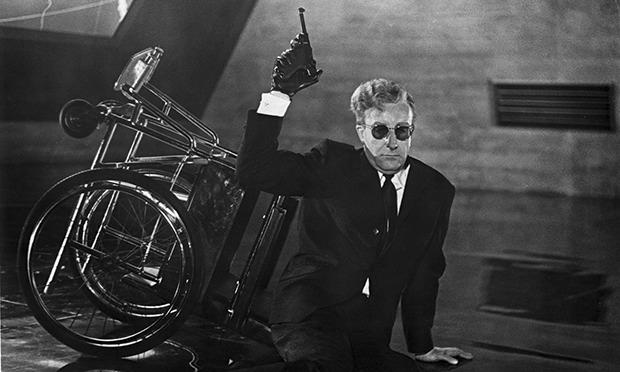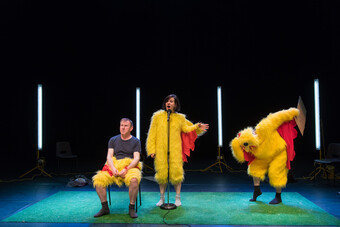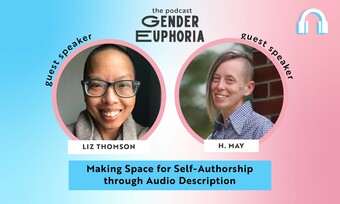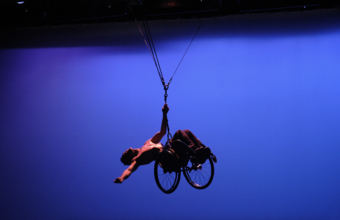Disability in Comic and Tragic Frames
This article will be published in the print book Reader in Comedy forthcoming in 2016 from Bloomsbury Publishing and co-edited with Alan Ackerman.
The connection between humor and disability is perhaps one of the most challenging and underresearched, aspects of comic theory. Modern theorists of humor and comedy generally pursue two lines of inquiry: along one they analyze how, historically, humor at the expense of the disabled has created and reestablished discriminatory and alienating comic conventions (these critics also argue about whether we’ve experienced the emergence of a taboo on such humor—or the continued lack of such a taboo); along the other line of inquiry theorists investigate different comic strategies used by the disabled to avert and displace comic insults (including black humor, ironic detachment, and self-deprecation). Disability and humor studies share a number of salient critical points, among them a focus on incongruity theory, which traces the source of humor to disjunction (among other things) between normative and non-normative appearances and behaviors. We can even argue that it is, in fact, the comic frame that has structured the very experience of disability across the world.
In the historical context of disability (as a socially constructed category connected to but not convergent with impairment—like gender and sex, for example), the very foundation of comic theory (as established by Plato and Aristotle) involves positioning oneself ethically and aesthetically towards the disabled. Plato makes an argument that the comic impulse is fundamentally a flaw of character because it involves laughing at others’ misfortune. In turn, Aristotle argues that comedy should in fact mock “a species of the ugly.” These two approaches to comedy, Plato’s and Aristotle’s, set up a theoretical framework that continues to be at the crux of humor and disability studies: how is it appropriate or not appropriate to laugh at disability (or, for that matter, any non-normative body and behavior), and at whom or what?
Existentially, disability is simultaneously an extremely alien experience to the non-disabled and an extremely familiar experience of the body-in-waiting (everyone’s body will eventually fall apart, and disability often functions as both a reminder of that fact and a certain relief at a yet-not-reached future). Thus, most historical and contemporary tragic narratives dealing with disability revolve around two extreme notions: on one hand, the disabled character is an “inspirational” figure (often sacrificed in melodramatic plots of suffering and redemption); on the other, he or she is an embodiment of “evil” (as defined by Freud’s analysis of Shakespeare’s Richard III as an archetypal model of the disabled who exhibits, according to Freud, an “obvious” correlation between physical disability and “deformities of character”).
The two extreme tragic narratives are translated into comic formulas through two strategies: (1) The disabled character—through the comic trope of self-deprecation—somehow manages to acquire the status of the “human” (and, thus, is no longer an alien object of mockery but in some way is “in on the joke” with the audience. He becomes, alternatively, inspiring and endearing). .Some examples include: Raymond Babbit (Dustin Hoffman) in Rain Man (1988); Frank Slade (Al Pacino) in Scent of a Woman (1992); Sarah Norman (Marlee Matlin) in Children of a Lesser God (1986); Mark (John Hawkes) in The Sessions (2012); and Cal (Jonny Weston) in Kelly & Cal (2014). (2) The disabled character’s “evil” impulses are so farfetched that they become grotesque: his ambitions are at once unrealistic and delusional (he becomes alternatively more and less than human, super threatening and super weak). Some examples of the “Evil Cripple” in film are Dr. Strangelove (Peter Sellers) in Dr. Strangelove (1964); Mini-Me (Verne Troyer) in Austin Powers: The Spy Who Shagged Me (1999); Elijah Price (Samuel L. Jackson) in Unbreakable (2000); and Bolivar Trask (Peter Dinklage) in X-Men: Days of Future Past (2014). These two comic formulas have persisted more or less unchanged, and they have remained mostly uncontested in both theoretical and comic writings and performance.
How is it appropriate or not appropriate to laugh at disability (or, for that matter, any non-normative body and behavior), and at whom or what?

Starting in antiquity, it was quite common and appropriate to laugh at the disabled. As a result, throughout the centuries, more often than not, the disabled would perform either in circuses or as court jesters. In medieval and Renaissance Europe, in fact, dwarf jesters were so popular that the practice of kidnapping and artificially stunting children became common to keep up with demand. In Shakespeare’s A Midsummer Night’s Dream, Lysander insults Hermia by calling her an artificially, “knot-grass made” dwarf: “Get you gone, you dwarf; / You minimus, of hindering knot-grass made; / You bead, you accord!” The desire to keep dwarfs and other “freaks” at court was almost universally viewed as a way to contain their magical capacity for evil. It was also believed that the touch of a dwarf could cure and fend off illness, and his stinging wit could “purge ill humour.” Some court jesters were developmentally challenged, with Down syndrome, Asperger’s, or autism, and they too were used for amusement, as their antics were considered a great source of entertainment.
Although some court jesters were killed in revenge for their biting humor; many others, ironically, found shelter in the safety of the court. The body of the disabled court jester, his ambivalent—if also precarious—position as both a prized possession and the object of ridicule, illustrates well the uneasy connection between disability and the tragic and comic frames.
Paradoxically, disability can embody both the tragic and comic frame simultaneously, depending on our degree of identification with the object (of pity or mockery respectively). As sixteenth century comic theorist, Gian Giorgio Trissino aptly put it: “if we have like sufferings, the sight of them in others does not move us to laughter.” If the wounds and suffering are “deadly and painful (…) they do not move laughter, but rather pity through fear that similar ills may come to ourselves.” The disabled body can at once be an object of mockery and object of pity. This paradoxical position of the disabled body as both tragic and comic is intimately intertwined in our sense of human dignity.
In his famous essay “Tragedy and the Common Man,” Arthur Miller modifies the Aristotelian definition of tragedy (as based on a “tragic flaw”) and argues that “the tragic feeling is evoked in us when we are in the presence of a character who is ready to lay down his life, if need be, to secure one thing—his sense of personal dignity.” Tragedy then, Miller writes “automatically demonstrates the indestructible will of man to achieve his humanity.” The concept of human dignity, like the concept of “humanity,” can be considered a historical and exclusionary concept that defines an exclusionary category (since not everyone is automatically granted the status of “human” and in fact, throughout the centuries, at different historical periods, the selected groups were customarily placed outside of that category). The disabled characters and their narrative journeys towards humanity and human dignity (e.g., Elephant Man narratives) are at the core of Miller’s understanding of tragedy. Their narrative journeys are very much rooted in this narrative model of a quest towards human dignity. In tragic narratives, this quest succeeds (through the pathos of suffering, sacrifice and self-sacrifice, and eventual redemption). In comic narratives, this quest can either fail or succeed. It succeeds in inspirational, “heroic” narratives that employ humor to make the quest and heroism of the character more palpable for non-disabled audience members. However, it fails in grotesque and farcical narratives where the disabled character is either demonically “evil” or a surreal fantasy creature (and thus, outside of the category of “human”).
Like all other marginalized groups, the disabled have also found recourse in humor as a coping strategy. Since most of that type of coping humor involves some form of self-deprecation, like other critics the theorists of disability and humor studies have wondered whether such humor indeed has liberatory potential or whether it reinforces and codifies the marginalization of non-normative bodies. In her book on Jewish humor, Ruth R. Wisse, for example, poignantly asks whether Jews can ever “overdose” on the self-deprecating humor: can a group of people who have been threatened with violence and extinction time and time again really afford to perpetuate the kind of humor that further self-marginalizes them? In a similar vein, the theorists of African American humor have wondered to what degree the self-deprecating humor “engendered by the slavery experience and codified during the relatively extended and popular run of blackface entertainment endured” backfired on the African American community by confirming and perpetuating some of the worst stereotypes of the era. Today’s self-deprecating Jewish, African American, or feminist humor often involves the element of meta-irony, and critics continue to argue about how effective such comic strategies are. Some disabled stand-up (or stand-down) comics, like Stella Young or Maysoon Zayid have started using the reversed gaze humor as a way to reframe the narrative language around their disabilities.
Like with every other marginalized group, the humor of the disabled has an inside and an outside audience. The humor directed at the outside audience is often performed at the expense of the marginalized group (with awareness of that group’s marginal status and its relationship to the mainstream audience). The inside humor, on the other hand, returns a comic gaze, often poking fun not so much at the marginal group but at the mainstream that marginalizes it. In one of her 1950s interviews, Lorraine Hansberry noted that “The intimacy of knowledge which the Negro may culturally have of white Americans does not exist in the reverse.” The rights of disabled lag significantly behind those of every other minority group, and Hansberry’s statement captures well the current state of the relationship between the disabled and non-disabled groups: the intimacy of knowledge that the disabled have of the non-disabled community does not exist in the reverse. Susan Wendell suggested that, “if disabled people were truly heard, an explosion of knowledge of the human body and psyche would take place. Perhaps the same can also be said of our humor?
***
Bibliography
Coogan, Tom, and Rebecca Mallett. “Introduction: Disability, Humor and Comedy.” Journal of Literary & Cultural Disability Studies 7.3 (2013): 247–53. Print.
Corker, Mairian. “‘Disability’: The Unwelcome Ghost at the Banquet . . . and the Conspiracy of ‘Normality.’” Body & Society 5.4 (1999): 75–83. Print.
Miller, Arthur. “Tragedy and the Common Man.” New York Times, February 27, 1949. Web. 12 May 2015. https://www.nytimes.com/books/00/11/12/specials/miller-common.html
Moran, Carmen C. “Beyond Content: Does Using Humor Help Coping?” Disability Studies Quarterly 23.3–4 (2003). Web. 20 May 2013.
Otto, Beatrice K. Fools Are Everywhere: The Court Jester Around the World. Chicago: U of Chicago P, 2001. Print.
“A Raisin in the Sun.” NPR.org, 11 March 2002. Web. 12 May 2015. http://sandbox.npr.org/programs/morning/features/patc/raisin/index.html
Reid, D. Kim, Edy Hammond Stoughton, and Robin Smith. “The Humorous Construction of Disability: Stand-up Comedians in the United States.” Disability and Society 21.6 (2006): 629–43. Print.
Shakespeare, Tom. “Joking a Part.” Body and Society 5.4 (1999): 47–52. Print.
Stronach, Ian and Julie Allan. “Joking with Disability: What’s the Difference between the Comic and the Tragic in Disability Discourses?” Body and Society 5.4 (December 1999): 31–45. Print.
Watkins, Mel. On the Real Side: Laughing, Lying, and Signifying—: The Underground Tradition of African-American Humor That Transformed American Culture, from Slavery to Richard Pryor. New York: Simon & Schuster, 1995. Print.
Wendell, Susan. “Toward a Feminist Theory of Disability.” The Disability Studies Reader. Ed. Lennard J. Davis. New York: Routledge, 1997. 260–78. Print.
Whitehead, James Beswick. Reflections of Rigoletto. 2001. Web. 12 May 2015. http://www.bjornetjenesten.dk/teksterdk/Rigoletto/reflections_of_rigoletto.htm
Wisse, Ruth. No Joke: Making Jewish Humor. Princeton, Princeton UP. 2013. Print.










Comments
The article is just the start of the conversation—we want to know what you think about this subject, too! HowlRound is a space for knowledge-sharing, and we welcome spirited, thoughtful, and on-topic dialogue. Find our full comments policy here
Yours is the first academic treatment of comedy I have ever read, and, from all that follows, I guess I
found it thought provoking. I now understand how I have been utilizing humor to help others glimpse the very strange predicaments befalling disabled folk, living in a society not designed for them. I can now also see how, at the same time, I extend my efforts in demonstrating how our experiences cannot be, in any other way, but at complete odds with realities of those blessed folk inhabiting
the "real world."
One true-life example I sometimes recount, most often for comic relief, was during a psychiatrist examination where the clinician inquired, "Do you hear voices?"
"No." I replied,
"But I'm virtually deaf, it would be a huge relief if I did!"
In other instances, I begin with fictitious self-deprecating humor, noting with pride how in high school my dyslexia was so pronounced that I received top prize as the school’s creative speller. But
then, I drive the point home with a harsh, real-life experience: at the age of 13, I was suddenly uprooted from a suburban Chicago home, with its specialized dyslexic educational programs, to the backwoods of rural Mississippi. Settling in there, I was suddenly thrown into 30-word weekly spelling tests, where every misspelling netted students one, solid battering with the paddle!
Moving a little further on with life, with its unfolding events laced with even more comic relief is my still
alive dream of becoming a college professor. It is a profession where I could thrive even today, especially with its latitude of work setting flexibility, allowing me to accommodate my various disability conditions. Alas, 20 years ago, I was forced to leave in shame my Indiana University Bloomington Sociology PhD program, even with the release of an academic publication (oft cited even today) from my thesis work and completion of all but the last semester of classes (with top grades at that point).
Falling suddenly ill, I quickly gained to 700 pounds. Diversity at that time, however, had evolved no further than ethnicity, gender, and sexual orientation. The concept of a fat sociologist repulsed faculty to the extent that none could be found to form a dissertation committee; alas, I left the department in abject failure. Today, even at 260 pounds, my constellation of disabilities, and an age of 57 years, renders me pretty much unemployable and homeless. But, citations continuing to mount in an academic field where article relevance rarely outlives a decade, my writing ironically remains relevant after 23 years in publication. Comically though, I, with an ever-growing absence from academia, am not.
And perhaps I can leave you with
one more chuckle: the path I have found allowing me to lay aside the all-consuming
rage over the past is my daily meditative practice of embracing the complete
irrelevance of my formal academic training. Meditation has been the only means
by which I could relinquish the supreme pride and sense of self I had invested
in myself and future. And in doing so, it has been the only way for me to
release all hope of that training ever contributing toward a viable income. At
this starting point, I am released to start anew with those resources at my
disposal, here and now. Only in this way, I am not a victim.
Dear David, Thank you so much for sharing your story. Please, contact me via email and I would be happy to share some resources with you. Unfortunately, academic world is brutal these days for everyone....so maybe you have nothing to regret....There are other opportunities out there and much to look forward....
This is a very important topic on a number of levels. The issue of comedy with the body, sexuality and orientation, race, ethnicity, gender, religion and more is always a sticky subject. Amy Schumer is currently being slammed for her routine that riffs over being a woman in a relationship with a Latino man. So going back to the sunject of the disabled, what are the uses of humor for those perceived to be deformed or disabled? I have also seen those labled as disabled making fun of themselves for their disability and making fun of each other. And then when it enters into a performance for an audience, for a show - what does this do? Magda, this is really important work. Thank you.